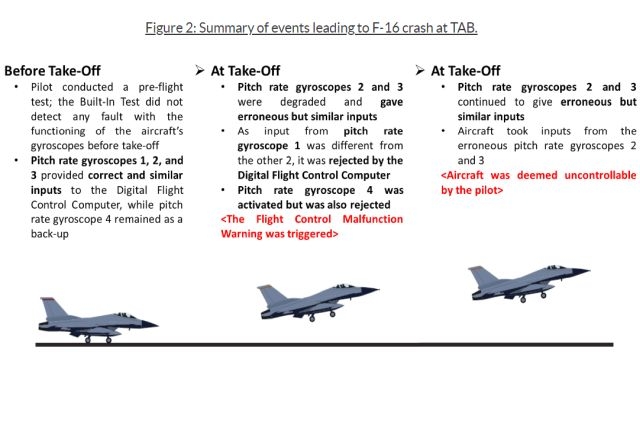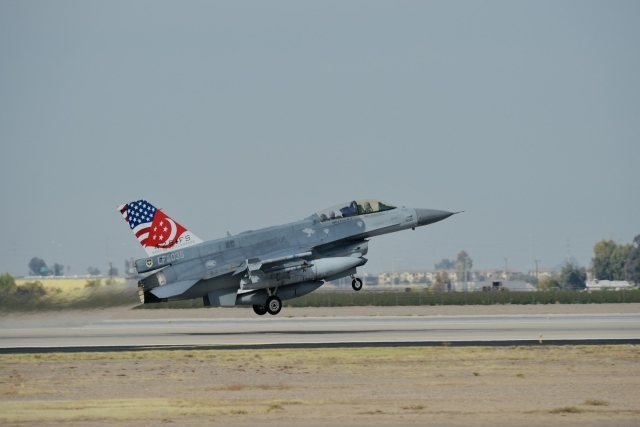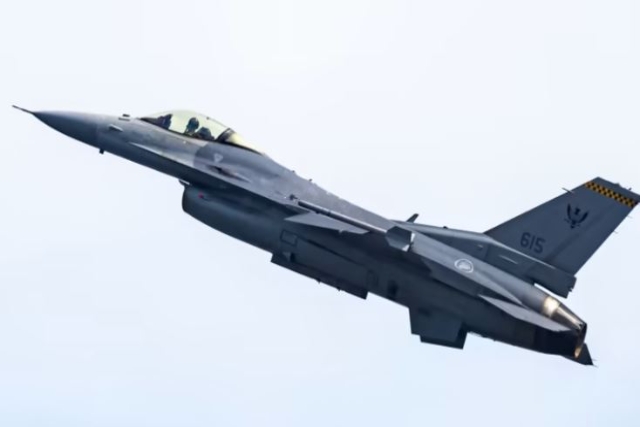Malfunctioning Gyroscopes Caused Singapore F-16 Crash: Final Report Confirms
The Singapore F-16's flight control computer accepted erroneous inputs from two malfunctioning gyroscopes as "correct," while rejecting inputs from 2 other functioning gyroscopes as "incorrect."

Singapore’s Ministry of Defense (MINDEF) has concluded that degraded pitch rate gyroscopes, which provided false inputs to the Digital Flight Control System, caused last month’s F-16 crash at Tengah Air Base.
The incident involved Republic of Singapore Air Force (RSAF) F-16C that crashed shortly after take-off during a routine training exercise on May 8th. The pilot ejected safely from the aircraft. According to MINDEF, this crash was the first involving an RSAF F-16 in over 20 years. The investigation revealed that the crash resulted from wear and tear in two of the jet's four pitch rate gyroscopes, which deliver pitch rate inputs to the aircraft's onboard Digital Flight Control System.
Despite pre-flight checks not revealing any issues with the sensors, gyroscopes 2 and 3 gave "erroneous but similar inputs" as the plane took off. While gyroscope 1 provided correct inputs, the aircraft's flight computer rejected it as the information differed from gyroscopes 2 and 3. The jet's fourth gyroscope also activated but was similarly rejected, triggering a Flight Control Malfunction Warning.
The investigation report stated, "Two out of four pitch rate gyroscopes in the F-16 gave erroneous but similar inputs to the Digital Flight Control Computer. This resulted in the flight control logic accepting the similar erroneous inputs as 'correct', and sequentially rejecting the inputs from each of the remaining functioning gyroscopes as 'incorrect'." As a result, the Digital Flight Control System was maneuvering based on false inputs from the degraded gyroscopes, leading the pilot to eject after determining the aircraft was no longer controllable.

The investigation was supported by F-16 manufacturer Lockheed Martin and Singapore's Transport Safety Investigation Bureau.
Lockheed Martin reports that this is the first F-16 crash due to malfunctioning gyroscopes in 50 years. The RSAF has introduced enhanced testing for gyroscopes, involving regular disassembly and testing with specialized equipment to detect early signs of degradation.
Singapore grounded its F-16 fleet after the May 8th crash, suspending all training. Following inspections, including each gyroscope, flights resumed on May 21st. The investigation found no issues with the RSAF's maintenance protocol or pre-flight tests.
The country’s air force operates a fleet of 60 F-16s, which it will continue to operate for the next decade until they are phased out in favor of the F-35 Lightning II.












